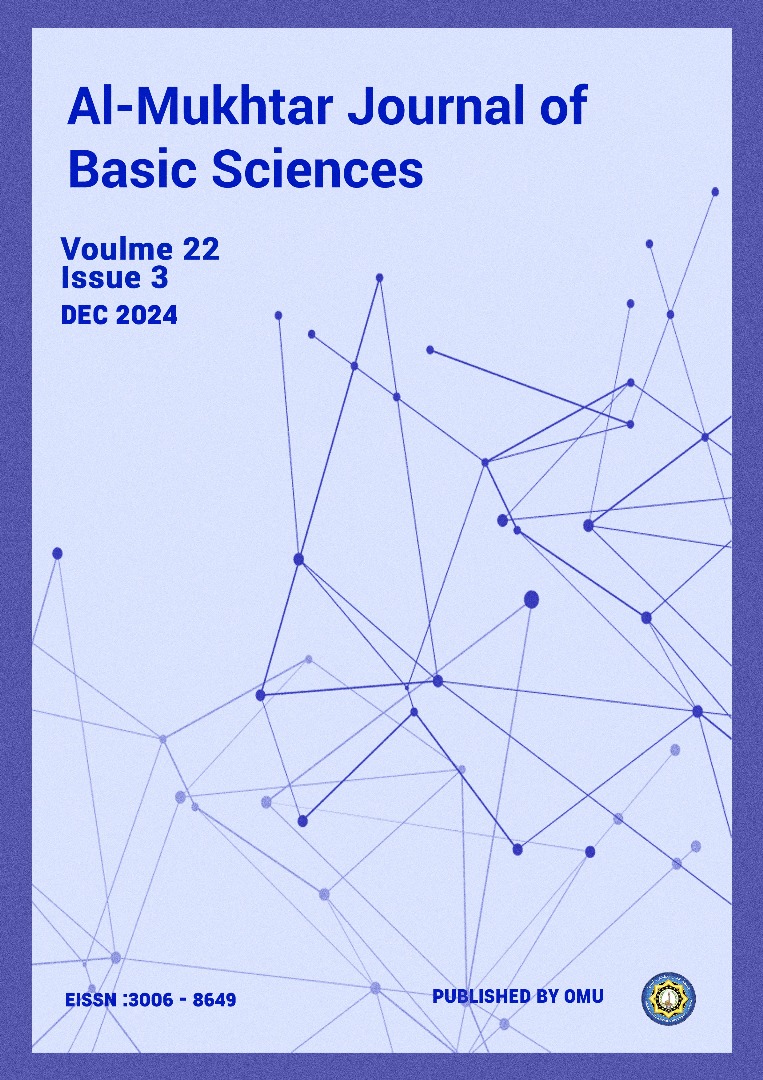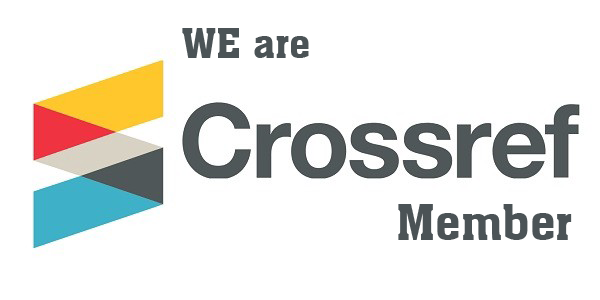Estimation of Natural Radioactivity and Radiation Hazards Indices of Some Organic Fertilizers Used in Al-Gable Al-Akhdar, Libya
DOI:
https://doi.org/10.54172/sja2f058Keywords:
Organic fertilizers, Sodiumaiodide, The Activityaconcentrations, Exposure, Cancer RiskAbstract
In the present work, an assessment of the following levels of natural radioactivity in 5 samples of organicafertilizers collected from the market in Al Bayda City, Libya. Sodium iodide (NaI) gamma spectroscopy was used. The activityaconcentrations ofaradionuclides in the 238U and 232Th natural decayachain as well as 40K wereadetermined. The average activity concentrations in 226Ra, 238U, 232Th and 40K in the samples studied were found to be (± 62.74, ± 64.42, ±63.63 and ±70.88 Bq Kg-1 (for samples. The results of this study have been compared with the worldarecommended values of (1550, 1500, (7-50) and (100-700)) Bqkg-1, respectively as specified by the [UNSCEAR, 2016]. The results showed that all samples had lower levels of radioactivity than the recommended limits for 226Ra, 238U, 40K for organic fertilizers and the activity concentrations were below the thorium (7-50 Bq kg-1) except fo1,fo4 and fo5 were higher than the recommended limits. , The a radium equivalent, absorbed dose rate in air, annual effective dose equivalent for indoor and outdoor exposure, excess lifetime cancerarisk, internal and external hazard indicators were calculated. The results ofamost samples were within theaglobal averagearecommended by [ UNSCEAR,2016]. So, it is safe to consume andadoes not pose a threat to the general public.
References
AL-abrdi, A. M. (2023). Measurements of natural radioactivity and evaluation of radiation hazard indices in Barley Samples in Libya Markets. Libyan Journal of Basic Sciences, 20(2), 51-64.
Al-Mousawi, N., Mouhamad, R., & Alsaadie, N. (2020). Radiation hazards assessment of phosphate fertilizers used in Latifiyah region, Iraq. DYSONA-Applied Science, 1(2), 73-80.
Geremew, H. (2023). Activity Concentration of Natural Radionuclides in Agricultural Soil, Fertilizer, their Transfer to Some Commonly Used Cereal Types, and Associated Health Hazards, Holeta, Ethiopia.
Hallenburg, J. K. (2020). Standard methods of geophysical formation evaluation. CRC Press.
Isinkaye, M., & Emelue, H. (2015). Natural radioactivity measurements and evaluation of radiological hazards in sediment of Oguta Lake, South East Nigeria. Journal of Radiation Research and Applied Sciences, 8(3), 459-469.
KeleÅŸ, E., & Atik, D. (2018). Estimation of radioactivity caused by chemical fertilizers on Trakya sub-region soils and its potential risk on ecosystem. European Journal of Sustainable Development, 7(3), 413-413.
Mwalongo, D. A., Haneklaus, N. H., Carvalho, F. P., Lisuma, J. B., Kivevele, T. T., & Mtei, K. M. (2023). Influence of phosphate fertilizers on the radioactivity of agricultural soils and tobacco plants in Kenya, Tanzania, and Uganda. Environmental Science and Pollution Research, 30(34), 83004-83023.
Najam, L. A., Mahmmod, R. H., & Albanna, O. M. J. (2022). Evaluation of Natural Radionuclides in Samples of Plant Fertilizers Used in Iraq and Radiation Hazard Indicators. Iranian Journal of Science and Technology, Transactions A: Science, 46(3), 979-987.
UNSCEAR, U. N. S. C. o. t. E. o. A. R. (2000). Sources and Effects of Ionizing Radiation, United Nations Scientific Committee on the Effects of Atomic Radiation (UNSCEAR) 2000 Report, Volume I: Report to the General Assembly, with Scientific Annexes-Sources. United Nations.
UNSCEAR, U. N. S. C. o. t. E. o. A. R. (2017). Sources, effects and risks of ionizing radiation, united nations scientific committee on the effects of atomic radiation (UNSCEAR) 2016 report: report to the general assembly, with scientific annexes. United Nations.
Yalcin, G. D., Danisik, N., Baygin, R. C., & Acar, A. (2020). Systems biology and experimental model systems of cancer. Journal of Personalized Medicine, 10(4), 180.
Downloads
Published
Issue
Section
License
Copyright (c) 2024 Asma M. A. Othman (Author)

This work is licensed under a Creative Commons Attribution-NonCommercial 4.0 International License.
Copyright of the articles Published by Al-Mukhtar Journal of Basic Sciences (MJBS) is retained by the author(s), who grant MJBS a license to publish the article. Authors also grant any third party the right to use the article freely as long as its integrity is maintained and its original authors and cite MJSc as the original publisher. Also, they accept the article remains published by the MJBS website (except in the occasion of a retraction of the article).












